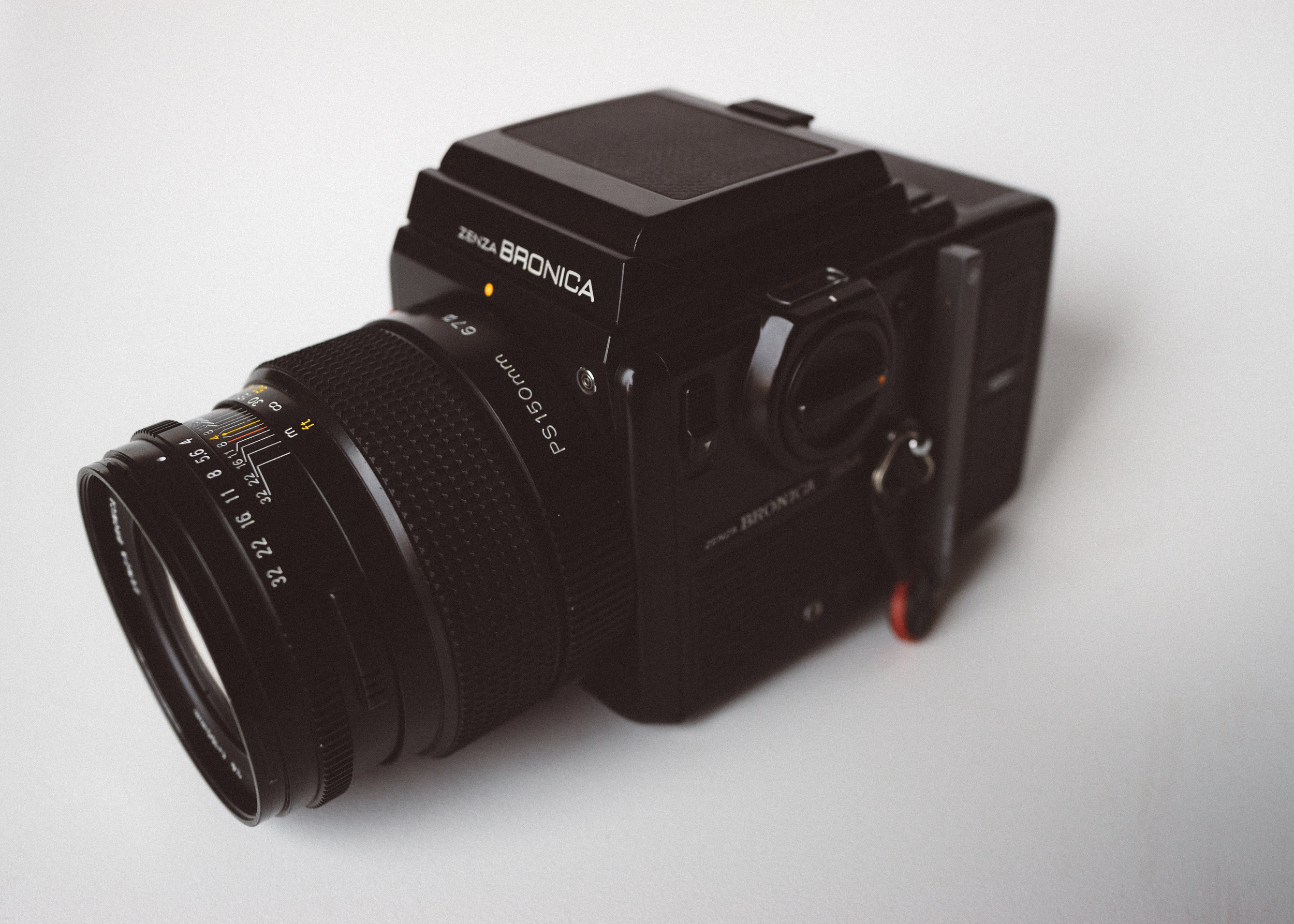
The 80mm was the last of the GS-1 lenses, introduced in 1997, and is difficult to find. The 500mm lens was only made by special order. The 110mm and 200mm lenses were later presented together with the teleconverters at the 1984 Photokina. At the introduction of the camera, only the 50, 65, 100, 150, 200 and 250mm lenses were available, with a 110mm, 350mm (never released) and 500mm being announced. Scanned by Camera Historian ( Image rights)Ī lens- or leaf-shutter camera, the GS-1 will synchronize flash at all available shutter speeds.


Shashin Kōgyō (Photographic Industries), Vol 41, No. Reproduced from an article in the Japanese periodical This was possibly a one off for promotional use when the 80mm F3.5 lens was launched in 1996. One camera (serial 3118000) has been noted with a brown leather finish (similar to certain other Bronica special editions), and a 80mm F3.5 lens (serial 8400001) with a white lens cover. The last 12 000 or so had small updates to the finish (black buttons).
#Zenza bronica sq ai series
About 22 500 camera bodies were made in total, with a first series (serial 310XXXX) of about 1500 units, and a internally revised series of about 21 000 (serial 311XXXX, 312XXXX and 313XXXX). The mount is stainless steel, while the front, left and right body covers are made of reinforced plastic. The body, back base and mount are made of a die cast light alloy. The GS-1 body is wider than the SQ-A, due to the larger film format, however the depth and height are about the same. In practice the design of the GS-1 made it possible to differentiate the GS-1 from its main competitors, the heavy Mamiya RZ and Mamiya RB 6x7-cameras with rotating backs and Seiko #1 shutters.ĭesigning the new PG-lenses for the small shutter aperture, Bronica emphasized correction of aberrations, reducing vignetting and a unified color balance for the whole series, with particular attention paid to distortion, aberrations, field curvature and chromatic aberration for the wide angle lenses. The choice of a #0 shutter was then made even if it restricted the possibility of large aperture lenses, especially of longer focal lengths. However, Bronica found that the helicoid diametre would have become 100mm or more, countering the purpose of a (relatively) small and light weight system, and in addition the shutter speed would be limited to 1/400 (not 1/500 as with #0 shutters). In developing the 6×7 camera (GS stands for "Grand Shooting" ), Bronica paid particular attention to implementing a LED display, using a Seiko #0 electronic shutter with digital control, an upgraded PG-series of lenses to overcome the small aperture of the #0 shutter, TTL-flash, multi-format backs and rejecting the use of a revolving back to reduce size and weight, and make it a mobile camera.ĭuring the design phase a #1 shutter with a larger 30mm aperture was considered. Tamron ended production of GS-1 cameras and lenses in June 2002, with sales continuing until stocks were depleted. It is a completely modular camera, with several optional focusing prisms and viewfinders (with and without exposure metering), lenses, and film backs.

Introduced in March 1983, the Bronica GS-1 in 6×7 cm format was the largest SLR produced by the company and the first medium format camera with TTL flash metering.


 0 kommentar(er)
0 kommentar(er)
